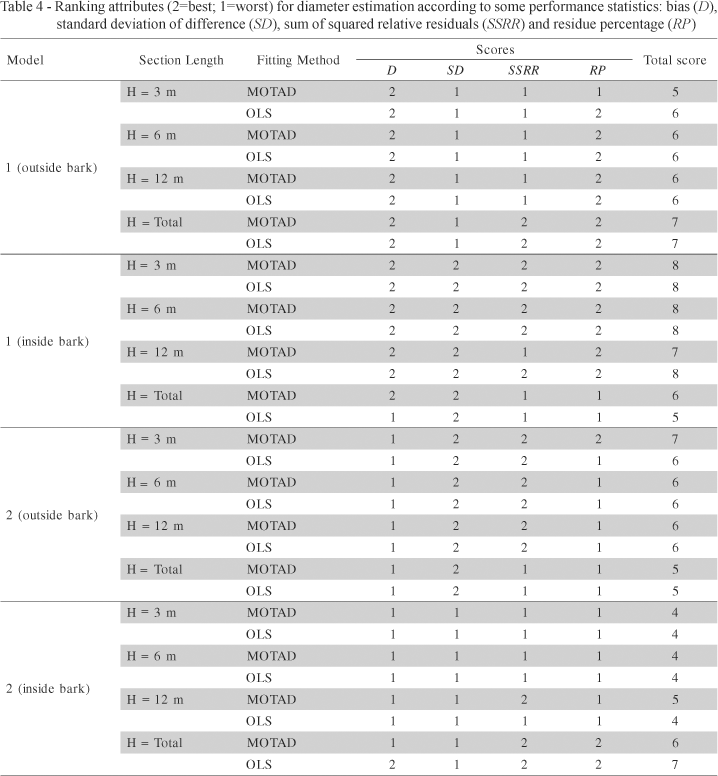Multiple product inventories of forests require accurate estimates of the diameter, length and volume of each product. Taper functions have been used to precisely describe tree form, once they provide estimates for the diameter at any height or the height at any diameter. This study applied a goal programming technique to estimate the parameters of two taper functions to describe individual tree forms. The goal programming formulation generates parameters that minimize total absolute deviations (MOTAD). These parameters generated by the MOTAD method were compared to those of ordinary least squares (OLS) method. The analysis used a set of 178 trees cut from cloned eucalyptus plantations in the Southern part of the state of Bahia, Brazil. The values of the estimated parameters for the two taper functions resulted very similar when the two methods were compared. There was no significant difference between the two fitting methods according to the statistics used to evaluate the quality of the generated estimates. OLS and MOTAD resulted equally precise in the estimation of diameters and volumes outside and inside bark.
MOTAD; ordinary least squares; goal programming; linear regression


























